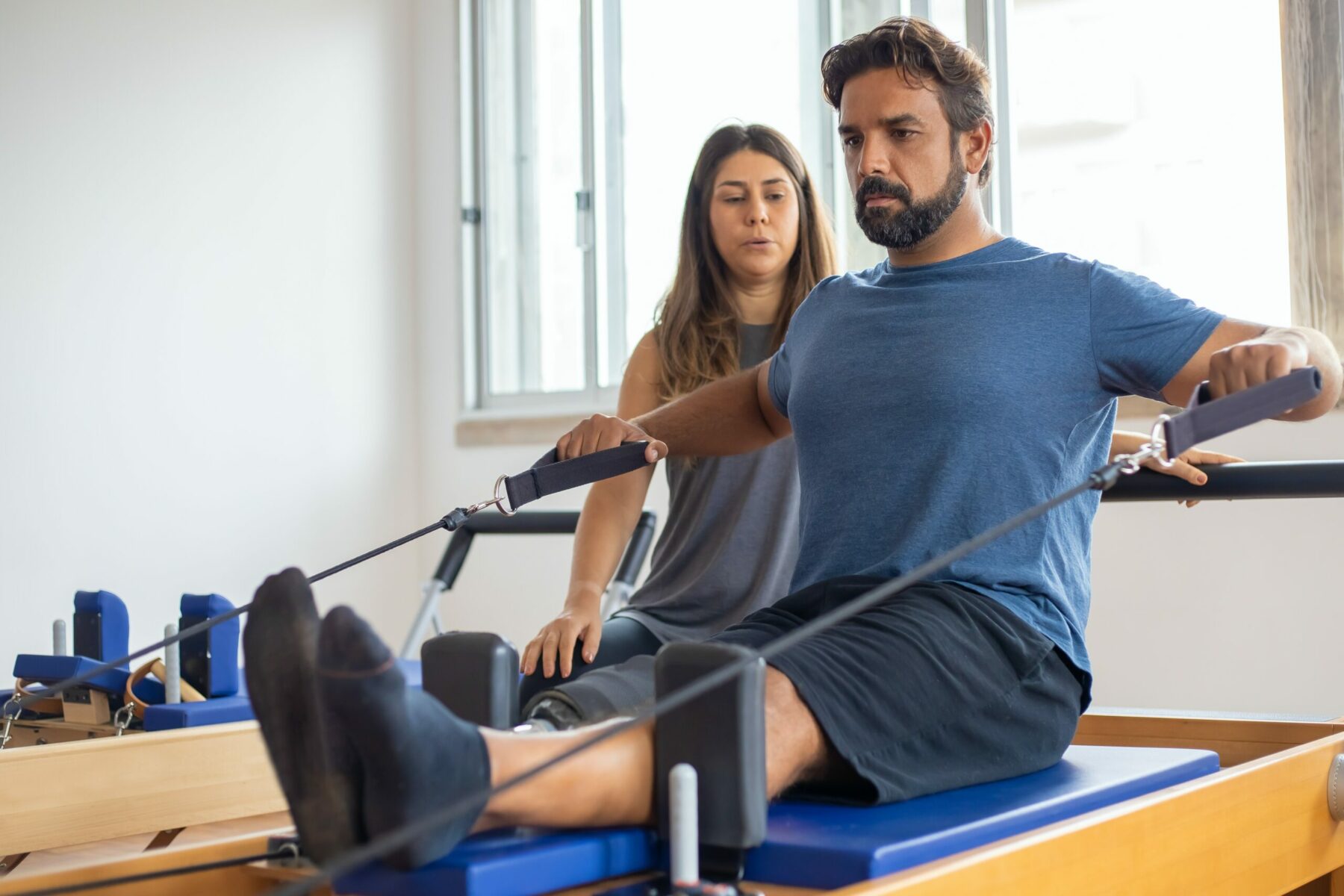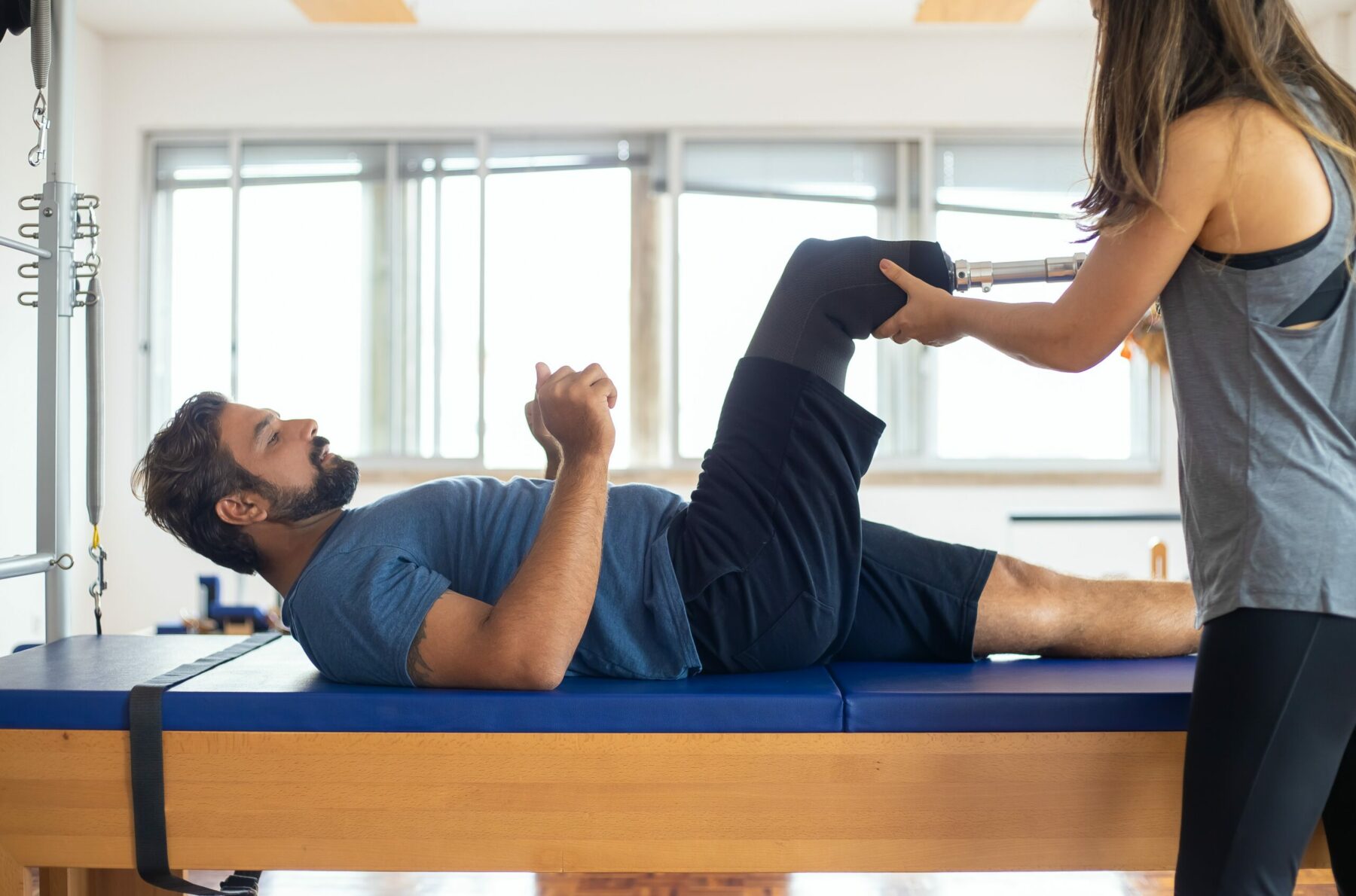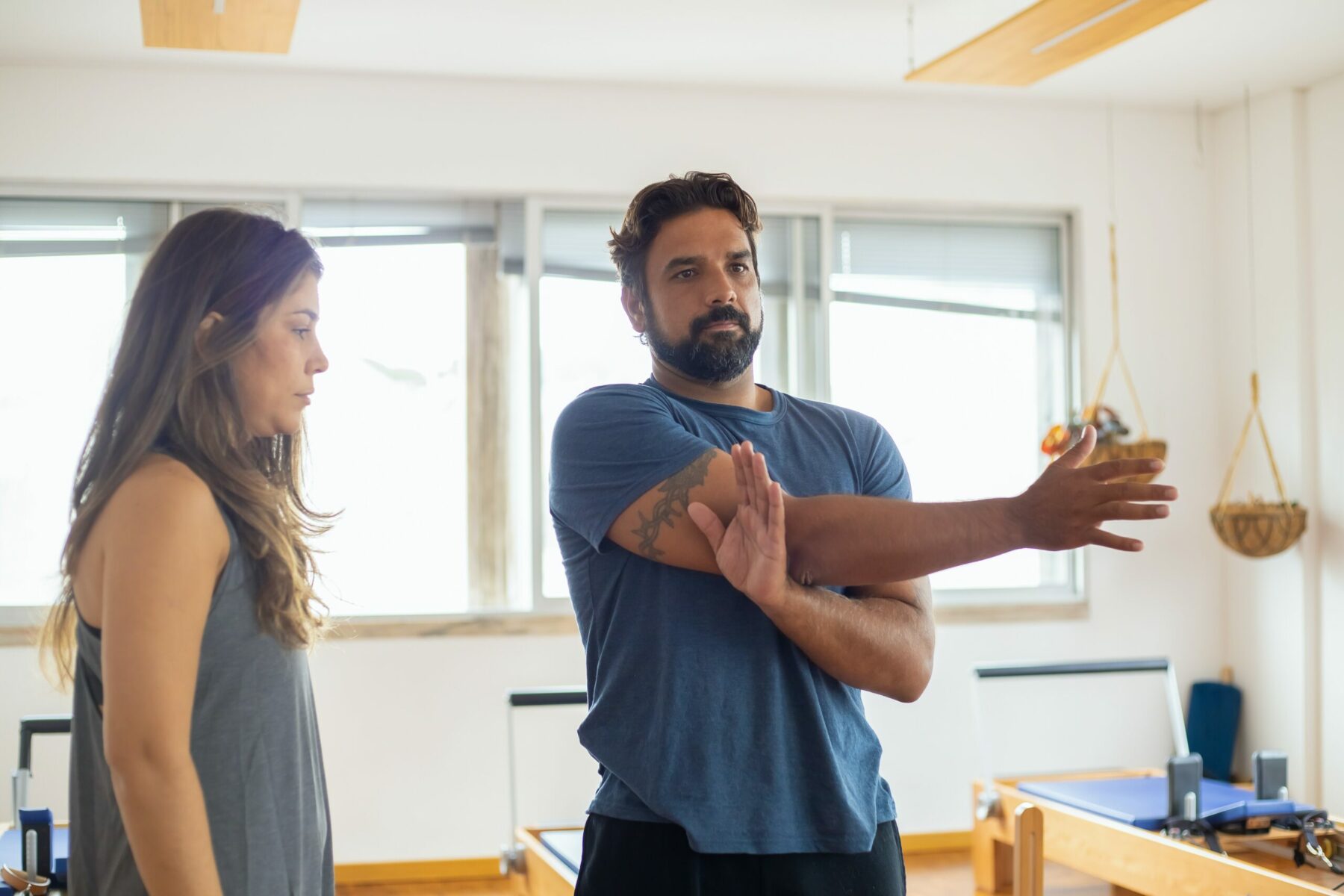How I Treat Physical Therapy Patients Using the Mind & Body

What do you think of when you hear “Mind & Body”? I get visions of a relaxing spa where your body and brain can relax and your stresses float away. Or maybe you think of the “mind-muscle connection” such as when you lift weights.
But, did you think of how education can affect pain? Or how stresses at home, relationships or work may relate to your lower back ache? Before we discuss the mind and body, let’s discuss exercise and why it’s important physically and mentally.
How Does Exercise Affect Your Brain?
It’s not groundbreaking news that physical activity is important for a long, healthy life. As exercise research advances, the list of benefits grows. Along with the obvious physical benefits, such as weight loss, physical activity can also positively impact your brain.
Physical activity increases the amount of blood flowing in your body, and more blood flow means more oxygen, vitamins and nutrients delivered to your brain. Blood also helps dispose of things your brain doesn’t need like toxins and metabolic waste.
Our brains’ energy demands are also massive! Despite accounting for only about 2% of our body weight, our brain consumes 20% of our oxygen consumption. To keep your brain healthy, you need to stay active. Studies indicate exercise can also positively affect your mental health, including improving sleep, relieving stress, and decreasing your risk of developing Alzheimer’s and depression.
How Does Your Mind Affect Your Body?

As a physical therapist, I work with people in pain every day. Each case is unique; everyone has an individual history and relationship with pain. In a TEDx Talk by Lorimer Moseley, a pain management specialist, he shared a fantastic story of how your history with pain can affect your current thoughts and behaviors.
Social, cultural and economic factors also influence how someone deals with pain and if they choose to make their private pain public. Do they choose to seek treatment? Does their culture encourage downplaying pain? Research also shows that different sports can affect your pain tolerance and thoughts toward pain.
Here’s a fictitious scenario that’s fairly common: Imagine you wake up one morning with hip pain. You weren’t injured. You didn’t fall. All you know is you’re having pain while you walk. It’s your first day back in the office, and it’s hard to concentrate because of the pain and getting used to being back in the office is stressful in and of itself. You recall your mother had hip pain two years ago, and it started the same way. She used a cane, then a walker but ultimately had a hip replacement. Her recovery took months, and she still walks with a limp. You realize you can’t get surgery now — you just went back to the office. You start to think, “If I can’t come into the office, will they fire me? If I get surgery, I won’t be able to exercise!” At this point, your hip pain is unbearable.
This is called catastrophization, which combines elements of worry, rumination and fear, and has both psychological and physical elements. When people catastrophize, they may experience feelings of helplessness, which can intensify their perception of the pain. Catastrophization has been found to be an important pain predictor, and there are scales that attempt to quantify your pain experience. This, like pain, is complicated and unfortunately, there is no general theoretical agreement on what it is or why it occurs. That means there are also no clear therapeutic frameworks/interventions to address catastrophization. However, cognitive approaches (education), as well as physical exercise, have shown to reduce catastrophizing scores and, therefore, pain.

As a physical therapist, it’s important to understand these underlying psychological factors when performing an evaluation. I want to understand your history, not just your current complaints. For the majority of cases I see, catastrophization is unwarranted. Sometimes, all that a patient needs is reassurance that their bodies are resilient and strong. Many patients have walked into the clinic with 10 out of 10 pain and left with 5 out of 10 pain after receiving a little education and reassurance. Research has shown that targeted reassurance can potentially prevent disabling symptoms, allowing you to live your life without allowing worry and fear to invade your thoughts. I’ve even found myself going down the hole of “Will I be able to play sports again?” or “My back is never going to get better.” In those cases, being proactive and taking steps to remedy the situation can provide positive mental encouragement and potentially physical benefits as well.
This absolutely doesn’t mean that reassurance and/or education is going to fix everything, or anything for that matter. But it’s important to be aware of what you may experience the next time you have an injury and make sure you know one strategy to potentially prevent it from disabling you further. If you’re in pain, see a healthcare professional. Let them perform an evaluation before you “Google” your symptoms and begin to worry and ruminate.
About the Author

Mark Denesha, PT, DPT is a Doctor of Physical Therapy and owner of Forever Forward Physical Therapy — Austin’s first, and only, fully equipped mobile PT clinic. FF PT services include manual therapy, strength training and injury recovery, when and where you need it. Mark’s collegiate sports and military background, combined with his curiosity for movement, have influenced his treatment style which prioritizes strength and function.






